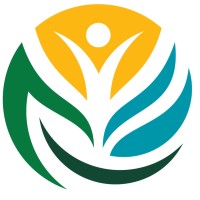Latest News
Fish advisory for Lower Putah Creek and Lake Solano.
OEHHA conducts research to analyze the benefits and impacts of California’s climate actions on community air quality and health.
Today, the California Environmental Protection Agency’s Office of Environmental Health Hazard Assessment (OEHHA) issued a fish consumption advisory update for Lower Putah Creek and Lake Solano, which runs through Solano and Yolo counties, from Monticello Dam on Lake Berryessa to just west of Sacramento. The advisory provides safe-eating advice for Bigscale Logperch, black bass species, catfish species, Common Carp, crayfish species, Inland Silverside, Mosquitofish, Sacramento Blackfish, Sacramento Pikeminnow, Sacramento Sucker, sculpin species, and sunfish species.
Today, the California Environmental Protection Agency’s Office of Environmental Health Hazard Assessment (OEHHA) issued a fish consumption advisory update for Lake Berryessa, located approximately 28 miles northeast of Santa Rosa, in Napa County. The advisory provides safe-eating advice for black bass species, catfish species, Chinook (King) Salmon, Inland Silverside, Rainbow Trout, and Threadfin Shad.
The Office of Environmental Health Hazard Assessment (OEHHA) is recommending that the State Water Resources Control Board (Water Board) establish the notification level (NL) for perfluorohexanoic acid (PFHxA) at 1 part per billion (equivalent to 1 microgram per liter). This recommendation is based on OEHHA’s development of a health-protective concentration intended to prevent noncancer effects, including thyroid, nasal cavity, liver, and developmental toxicity.
New Study Shows Cleaner Vehicles Lead to Healthier Air for All Californians
Findings Demonstrate Importance of Equity-Driven Action
Human health impacts (heat, wildfire smoke and air quality) webinar: Bridging Science and Action. The sixth in the series, co-convened with the California Department of Public Health and the California Air Resources Board, addresses the impacts of heat, wildfire smoke and changes in air quality on Californians’ health, and efforts underway to address them.
The California Environmental Protection Agency’s Office of Environmental Health Hazard Assessment (OEHHA) is hosting a series of webinars as part of its efforts to track and report on climate change and its impacts on California. OEHHA launched the webinar series with a symposium held on January 24, 2024.
Kannan Krishnan, has served since July 2024 as Assistant Deputy Director for Scientific Programs.
This webinar is the fifth in the series, co-convened with the Ocean Protection Council. It will address the impacts of climate change on California’s oceans and coasts, and efforts underway to address them.
